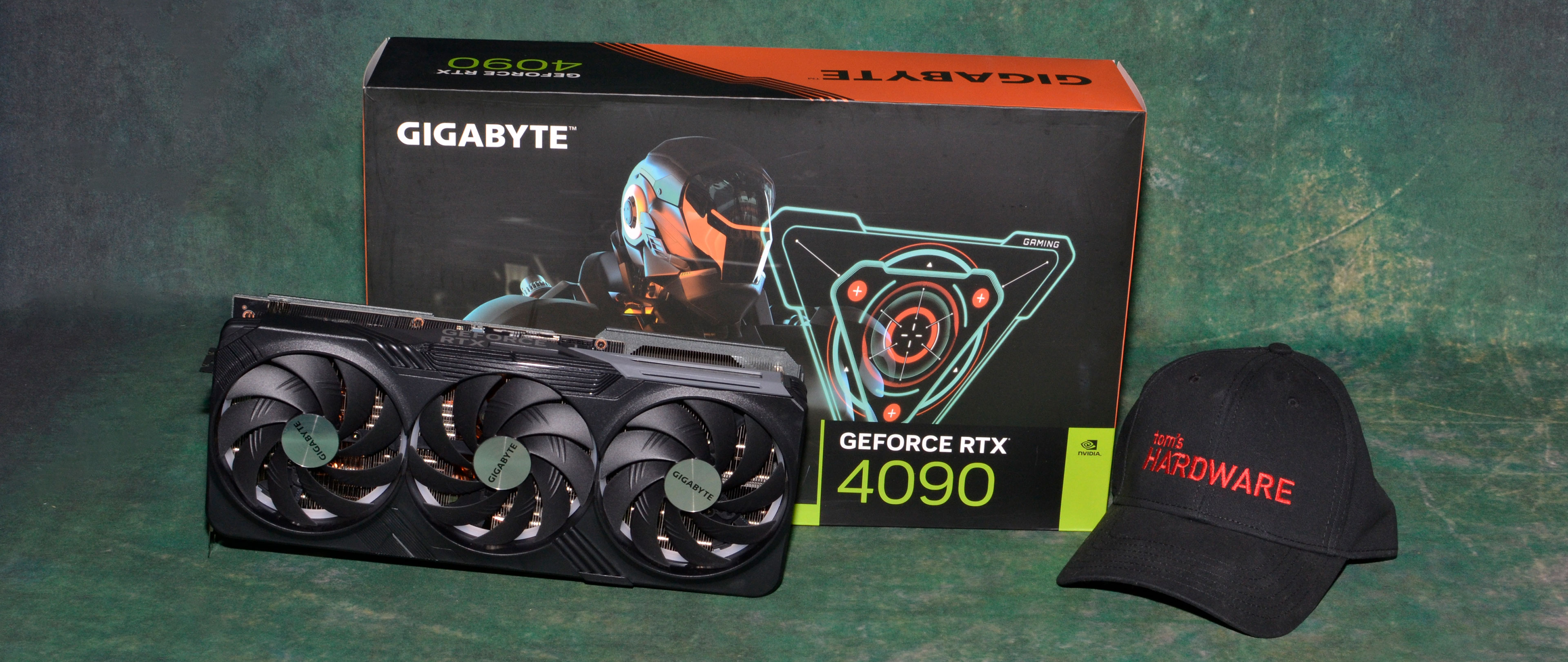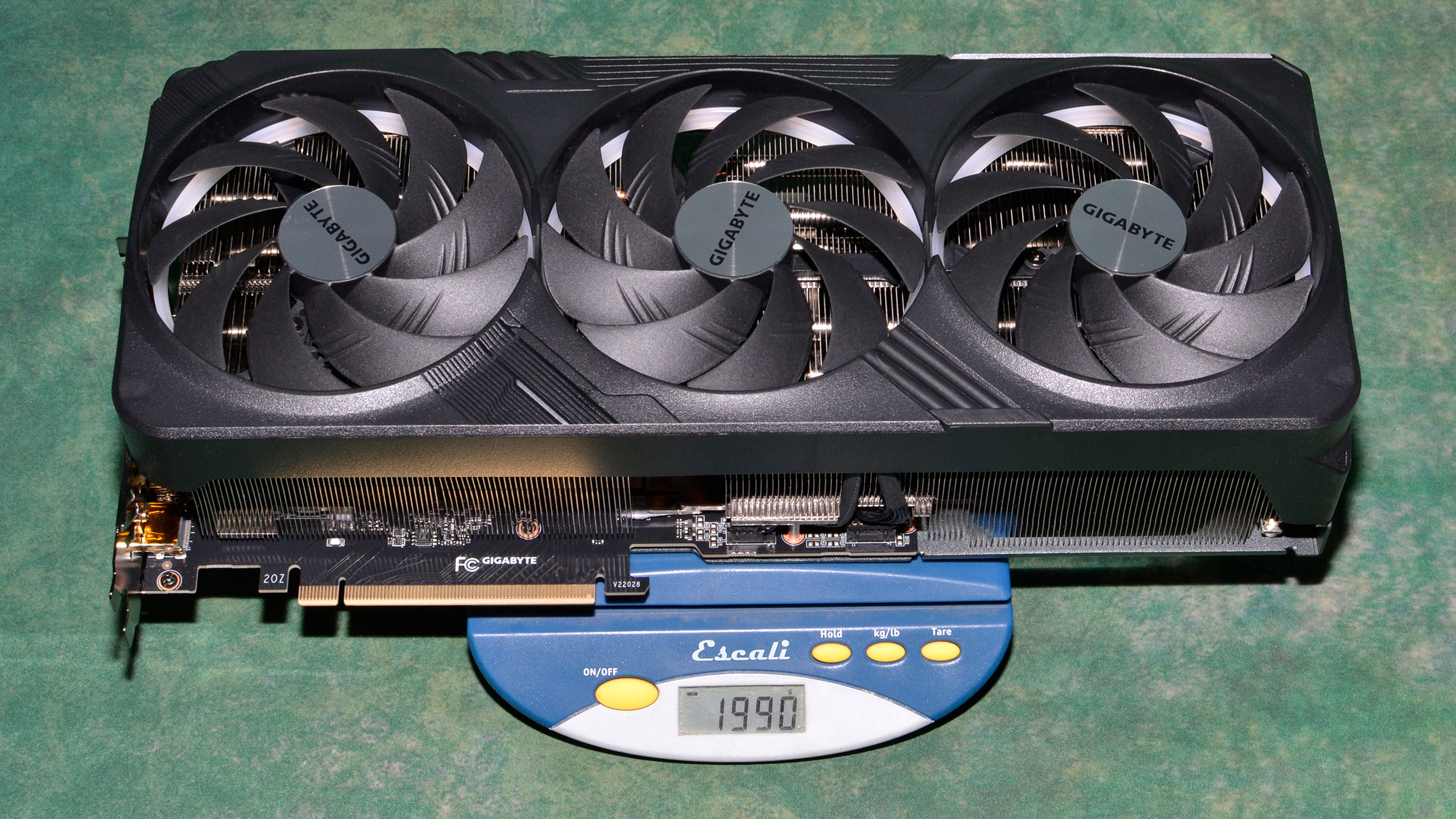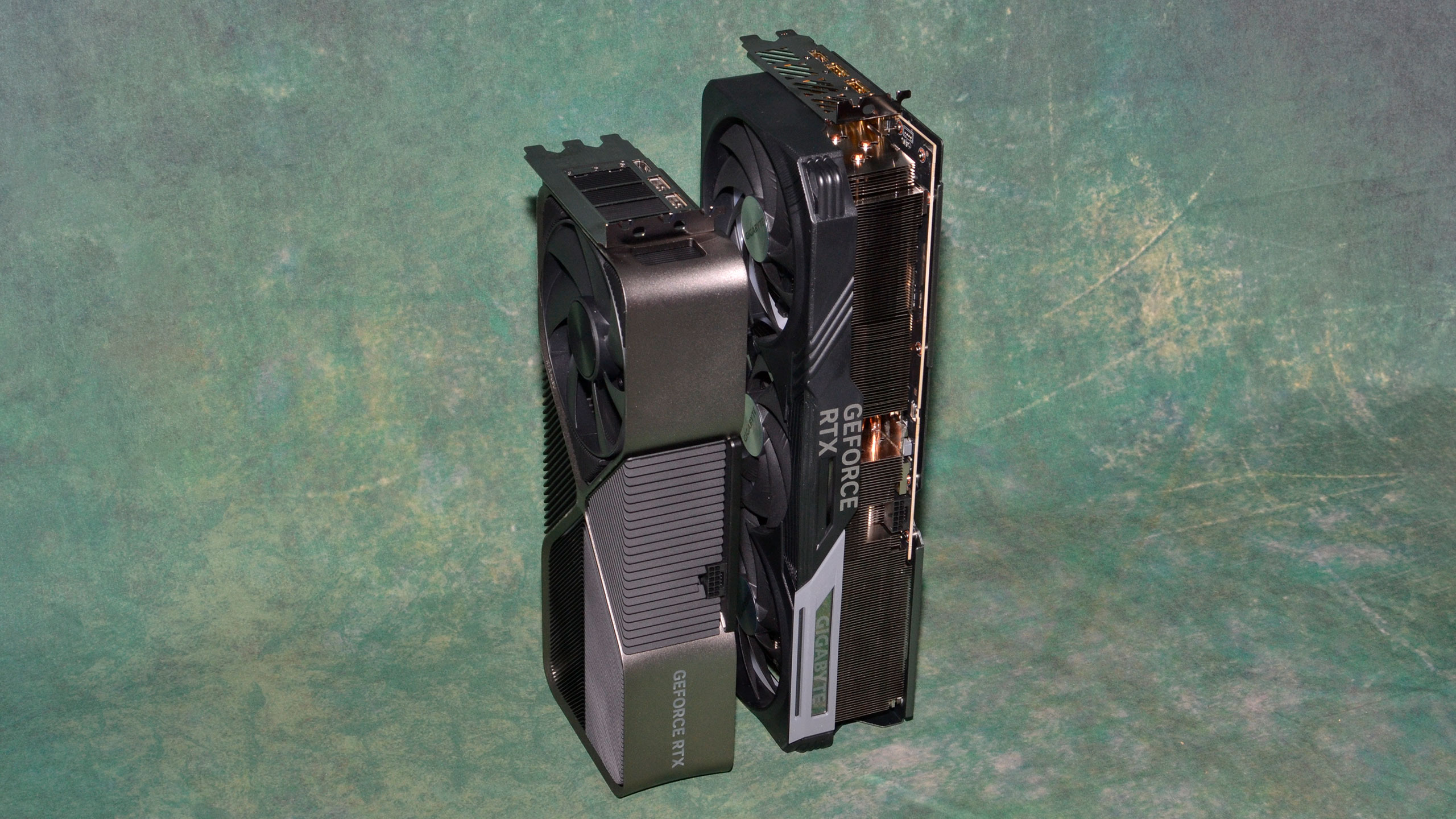Why you can trust Tom's Hardware
The Gigabyte RTX 4090 Gaming OC cranks the overclocking dial all the way to 15 – as in 15 MHz. Given the reference boost clock is 2,520 MHz and real-world gaming clocks are typically over 2.7 GHz, that represents about a 0.6% theoretical performance increase. In practice, it sometimes can't even beat the Founders Edition.
Pricing meanwhile favors Nvidia's reference card, at $1,599 compared to $1,699 for the Gigabyte Gaming OC. Except, finding either card at the suggested price will require more than a bit of luck. A quick look around the various online shops shows the least expensive RTX 4090 cards are still going for over $2,000. The $1,599 GPUs listed at Best Buy have been sold out since launch.
Meanwhile, we're still waiting to hear an official statement on what's going on with the 16-pin 12VHPWR adapters. There are over 20 reports of failed connectors now, and we've heard several declarations from people hypothesizing what's going wrong. The latest is JohnnyGuru (now at Corsair) basically citing user error, but it's hard to recommend anyone buy a graphics card with a 16-pin connector without a clear explanation of the problem and a solution for it.
If you don't care about the potential for melting connectors and just want the fastest graphics card around, the RTX 4090 currently sits uncontested at the top of our GPU benchmarks hierarchy. We have the RTX 4080 launching next week, and AMD's RDNA 3 GPUs have now been unveiled, slated to arrive on December 13. Pricing certainly looks better on the AMD cards, but AMD was also candid in that it doesn't seem to have any plan to go up against the RTX 4090. I heard as much at AMD's RDNA 3 announcement event — multiple people said something to the effect of, "We were caught off guard by how big Nvidia went with RTX 4090 and AD102."
That's understandable. If we look at the previous generation Nvidia GPUs, the data center GA100 has 54.2 billion transistors and measures 826mm^2. It has a maximum configuration of 128 SMs and 8,192 CUDA cores. But due to the massive size, the largest shipping configuration only has 6,912 CUDA cores and 108 SMs enabled. The largest of the consumer chips, GA102, only has 28.3 billion transistors and measures 628mm^2 — that's partly because GA100 used TSMC N7 while GA102 used Samsung 8N. GA102 tops out at 84 SMs and 10,752 CUDA cores, though without as much deep learning functionality.
Now, look at Hopper H100 and Ada Lovelace AD102. H100 has 80 billion transistors and measures 814mm^2, with a maximum configuration of 144 SMs. The top shipping variant right now has 132 SMs enabled with 8,448 CUDA cores. AD102 meanwhile packs 76.3 billion transistors into 608mm^2, with up to 144 SMs and 18,432 CUDA cores. Since it's built on the same TSMC 4N process as H100, the final size shows how much closer the consumer side is to the data center side now.
Back to Gigabyte, it's effectively as fast as every other RTX 4090 card, give or take. If you want the absolute fastest option possible, the Asus RTX 4090 ROG Strix currently holds that position based on our testing and benchmarks, but you'll pay dearly for that privilege — assuming you can even find one.
You can find the Gigabyte RTX 4090 Gaming OC for $2,287, "in stock," though it's all third-party listings and there's no clear guarantee that the cards will ship any time soon. Alternatively, the Gigabyte RTX 4090 WindForce starts at $2,199, also from third parties. You lose the RGB lighting and 15 MHz if you go that route.
Assuming everything was available at MSRP, the Founders Edition still walks away with an easy victory. It's built well, performs slightly better than some of the base models from other add-in card vendors, and has a lower price than most AIC models. But since you can't find the Founders Edition in stock, Gigabyte provides a reasonable alternative that might be just what you need for your next extreme PC build.
- MORE: Best Graphics Cards
- MORE: GPU Benchmarks and Hierarchy
- MORE: All Graphics Content
Get Tom's Hardware's best news and in-depth reviews, straight to your inbox.
Current page: Gigabyte RTX 4090 Gaming OC: Basically a Reference Card
Prev Page Gigabyte RTX 4090 Gaming OC: Power, Temps, Noise, Etc.
Jarred Walton is a senior editor at Tom's Hardware focusing on everything GPU. He has been working as a tech journalist since 2004, writing for AnandTech, Maximum PC, and PC Gamer. From the first S3 Virge '3D decelerators' to today's GPUs, Jarred keeps up with all the latest graphics trends and is the one to ask about game performance.
-
cknobman Between pricing, power, things melting I want nothing to do with this gen of Nvidia cards.Reply
I'll wait to see what AMD has and if they suck too then I will just wait for next gen or pricing to drop like a rock. -
Roland Of Gilead Replycknobman said:Between pricing, power, things melting I want nothing to do with this gen of Nvidia cards.
I'll wait to see what AMD has and if they suck too then I will just wait for next gen or pricing to drop like a rock.
Have to agree with you! This chase for max performance is not something I'm interested in. Same with current gen CPU's. Too much power draw.
It's almost cyclical. A good few years ago, power requirements went up dramatically for both GPU's and CPU's, and then dialled back a little with more efficient designs. Seems like we're here again. Hopefully the next gen or two will dial back power consumption to more reasonable levels, while maintaining a decent leap in performance over the previous gen. Specially where we are right now in a global sense, cost of living, utilities, and an ever-worsening climate situation. Electricity/Gas costs a bomb here in Europe. These GPU's just don't make sense for most people. -
RodroX @JarredWaltonGPU with the melting adapter and native cables issues, you Sir are a very brave man to go ahead and OC one of this beasts!Reply -
mrv_co I guess I'm glad these cards exist and continue to push the performance envelope, but I just never made the mental leap to need or want a 'flagship' GPU (much less an even larger case and even more power hungry power supply)... especially since, having had full-tower and mid-tower cases over the years, I transitioned to a SFF case that is cool, quiet and fits neatly under my desk, while realizing that I'm perfectly happy with my ultra wide QHD display.Reply -
JarredWaltonGPU Reply
What's the worst that can happen? It's not like I leave the PC running and walk away for hours. If it melts, that would be sort of awesome and I could do an article on how I caused a 4090 to melt! LOLRodroX said:@JarredWaltonGPU with the melting adapter and native cables issues, you Sir are a very brave man to go ahead and OC one of this beasts!
I still suspect there's a better than reasonable chance Jonny Guru is right and that a few people didn't properly insert the connector. There's a lot of current running through there. Manufacturing defects are the only other real possibility. Given we never heard of people melting RTX 3090 or 3090 Ti 12-pin connections, and that the extra four sense pins make it a bit more difficult to fully insert the 16-pin connector, that seems the most likely option.
But until we have some official statement of cause and cure, it really muddies the RTX 40-series waters! -
junglist724 Reply
I've been sticking flagship CPUs and GPUs into SFF cases for a couple generations now. The 4090FE still fits into some SFF cases and should work well in ones that take good advantage of flow through coolers. The C4-SFX(if it ever actually releases) looks like it would work well even in an air cooled build with a 7950X/13900K + 4090FE. Use an SX1000 PSU plus a 90 or 180 degree 12VHPWR adapter and powering it should be fine.mrv_co said:I guess I'm glad these cards exist and continue to push the performance envelope, but I just never made the mental leap to need or want a 'flagship' GPU (much less an even larger case and even more power hungry power supply)... especially since, having had full-tower and mid-tower cases over the years, I transitioned to a SFF case that is cool, quiet and fits neatly under my desk, while realizing that I'm perfectly happy with my ultra wide QHD display. -
Neilbob Trying hard ... not ... to be ... grumpy old ... misery guts ... ack ...Reply
Subjective: Quantity and/or quality of RGB a matter of total irrelevance to some people.
Pained gasping for breath
(Has no intention of ever letting one of these near the electricity bills. Not sure why the need was felt to comment at all).


